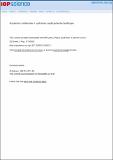Files in this item
A polariton condensate in a photonic crystal potential landscape
Item metadata
| dc.contributor.author | Winkler, K. | |
| dc.contributor.author | Fischer, J. | |
| dc.contributor.author | Schade, A. | |
| dc.contributor.author | Amthor, M. | |
| dc.contributor.author | Dall, R. | |
| dc.contributor.author | Geßler, J. | |
| dc.contributor.author | Emmerling, M. | |
| dc.contributor.author | Ostrovskaya, E.A. | |
| dc.contributor.author | Kamp, M. | |
| dc.contributor.author | Schneider, C. | |
| dc.contributor.author | Höfling, S. | |
| dc.date.accessioned | 2015-03-26T11:01:02Z | |
| dc.date.available | 2015-03-26T11:01:02Z | |
| dc.date.issued | 2015-01-30 | |
| dc.identifier | 176912759 | |
| dc.identifier | 04b35b88-ce73-42fd-a669-58875ca1d8cd | |
| dc.identifier | 84924294275 | |
| dc.identifier | 000352864600001 | |
| dc.identifier.citation | Winkler , K , Fischer , J , Schade , A , Amthor , M , Dall , R , Geßler , J , Emmerling , M , Ostrovskaya , E A , Kamp , M , Schneider , C & Höfling , S 2015 , ' A polariton condensate in a photonic crystal potential landscape ' , New Journal of Physics , vol. 17 . https://doi.org/10.1088/1367-2630/17/2/023001 | en |
| dc.identifier.issn | 1367-2630 | |
| dc.identifier.uri | https://hdl.handle.net/10023/6342 | |
| dc.description | This work has been supported by the State of Bavaria and the Australian Research Council (ARC). The authors thank M D Fraser, N Y Kim, Y Yamamoto, and V D Kulakovskii for fruitful discussions. This publication was funded by the German Research Foundation (DFG) and the University of Wuerzburg in the funding programme Open Access Publishing. | en |
| dc.description.abstract | The possibility of investigating macroscopic coherent quantum states in polariton condensates and of engineering polariton landscapes in semiconductors has triggered interest in using polaritonic systems to simulate complex many-body phenomena. However, advanced experiments require superior trapping techniques that allow for the engineering of periodic and arbitrary potentials with strong on-site localization, clean condensate formation, and nearest-neighbor coupling. Here we establish a technology that meets these demands and enables strong, potentially tunable trapping without affecting the favorable polariton characteristics. The traps are based on a locally elongated microcavity which can be formed by standard lithography. We observe polariton condensation with non-resonant pumping in single traps and photonic crystal square lattice arrays. In the latter structures, we observe pronounced energy bands, complete band gaps, and spontaneous condensation at the M-point of the Brillouin zone. | |
| dc.format.extent | 1920229 | |
| dc.language.iso | eng | |
| dc.relation.ispartof | New Journal of Physics | en |
| dc.subject | Exciton polariton | en |
| dc.subject | Microcavity | en |
| dc.subject | Optical lattice | en |
| dc.subject | Quantum simulation | en |
| dc.subject | QC Physics | en |
| dc.subject | NDAS | en |
| dc.subject.lcc | QC | en |
| dc.title | A polariton condensate in a photonic crystal potential landscape | en |
| dc.type | Journal article | en |
| dc.contributor.institution | University of St Andrews. School of Physics and Astronomy | en |
| dc.contributor.institution | University of St Andrews. Condensed Matter Physics | en |
| dc.identifier.doi | 10.1088/1367-2630/17/2/023001 | |
| dc.description.status | Peer reviewed | en |
This item appears in the following Collection(s)
Items in the St Andrews Research Repository are protected by copyright, with all rights reserved, unless otherwise indicated.

